The QPix® Microbial Colony Picker from Molecular Devices leverages best-in-class colony-picking technology to ease bottlenecks and rapidly, precisely, and efficiently screen through huge genetic libraries.
The user-friendly and intuitive software guides users through the setup of colony-picking runs where precision robotics pick the correct colonies every time. In addition to microbial screening, the system automates various sample preparation and plate handling processes like plating on agar and transfer of bacterial liquid culture.
The recording of data is done automatically into the database of the machine, thereby offering users a full audit trail and sample tracking, thereby guaranteeing that no data is ever lost. The modular, scalable series of colony pickers enables groups of all sizes to increase the precision and throughput of their workflow while still enabling future throughput growth.
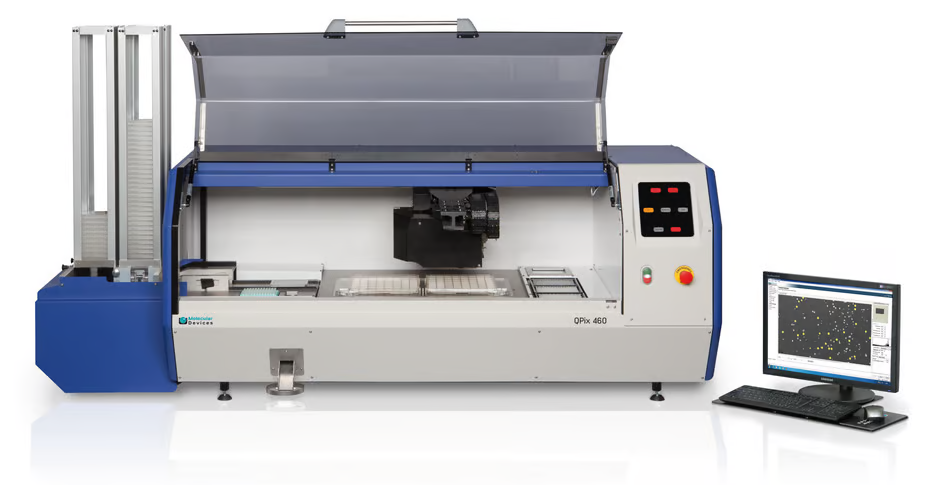
Anatomy of a QPix system. Image Credit: Molecular Devices UK Ltd
Identify Colonies with a Desired Phenotype
The QPix colony pickers support a wide range of microorganisms and multiple selection modalities, such as fluorescence intensity, size and proximity, blue/white selection, and zone of inhibition.
Select Colonies Efficiently
Effective picking is ensured by a suite of organism-specific pin and agar sensors. The system provides a picking efficiency of >98%, enabling users to walk away confidently.
Maintain Sterility
A host of sterility features are available, including a UV light for sanitizing the instrument's interior, pin washing, and halogen drying of pins.
Features
Organism-Specific Pins
Different shape and picking area pins maximize efficiency for E. coli, phage, and yeast. Plating-specific pins ensure uniform distribution of liquid culture onto agar.
Plating and Spreading
Automated plating and streaking of 96 samples can be completed in as little as 30 minutes, thereby offering greater walk-away time.
Agar Sensing
Ultrasonic agar height sensor detects differences in height as a result of variable pouring volume, enabling maximum picking efficiency.
Multiple Imaging Modes
Colonies can be picked based on pre-defined parameters utilizing white light, color, and fluorescence. The use of filters allows applications like blue-white colony screening.
Replication, Grid, and Hit Picking
Automated plate handling and tracking ease downstream assay and sample management. QPix colony pickers offer adaptable gridding, plate replication, and hit-picking capabilities.
Scalable Automation Options
The QPix HT model is a robot-compatible solution with a modular deck. The Advanced Workflow Engineering Solutions Team is also on hand to help customize a colony picker with a range of custom services.
Automate Users’ Workflow with the QPix Colony Picker
Colony picking is a vital step in biological research as researchers often isolate microbial clones to mass produce DNA or proteins which are subsequently used in a range of downstream applications.
Conventionally, colony picking is a manual process that is performed using sterile pipette tips or inoculation loops. This can be a very slow, labor-intensive, and time-consuming process. Not only will automated colony pickers make the entire process quicker, but the results are more reliable and consistent.
The Process
1. Plating: Plate samples to agar
The QPix system can plate and streak 96 samples in about 30 minutes, which is a considerable improvement in throughput compared to the manual process.
2. Screening: Selective screening by fluorescent detection of the target protein
The QPix system supports fluorescent and colorimetric detection, thereby enabling researchers to determine and isolate colonies that tend to display the preferred phenotype or biological function. The system only picks colonies of interest, thus saving money and time.
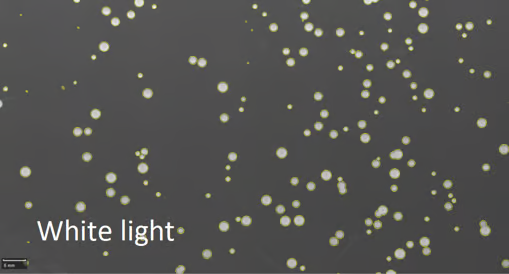
Image Credit: Molecular Devices UK Ltd
3. Picking: Pick the best colonies
The QPix system has the potential to precisely pick 3,000 colonies per hour, thereby removing common errors linked to manual processes like double picks or misses.
Sensors in the system can also automatically detect agar height, aiding in high-accuracy robotics to pick single colonies gently while achieving efficiency greater than 98%.
4. Replicating: Make multiple copies of microplates
The replicating function present in the QPix system makes duplicates and sub-libraries of colonies, thereby enabling scientists to have a working microbe plate available for assays and another plate for sample banks.
Listed below are the three types of plate replications
- Identifical replicates (96- to 96-well, 384- to 384-well plates)
- Expansion (1 × 384-well plate into 4 × 96-well plates
- Compression (4 × 96-well plates into 1 × 384-well plates)
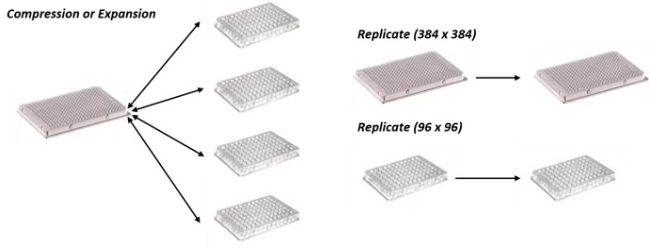
Image Credit: Molecular Devices UK Ltd
5. Gridding (Arraying): Set up high arrays for offline screening
Picked colonies can be arrayed onto filters or agar for hybridization screening. Up to 6 filters, with up to 57,600 spots per filter, are supported, thereby giving users a profitable and robust way to screen libraries.
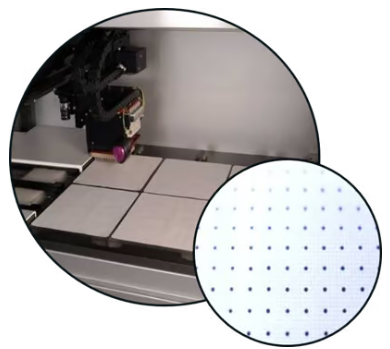
Image Credit: Molecular Devices UK Ltd
6. Re-Arraying: Cherry pick from microplate to consolidate preferred clones
Cherry-picking can be used to consolidate clones from different plates into one plate.
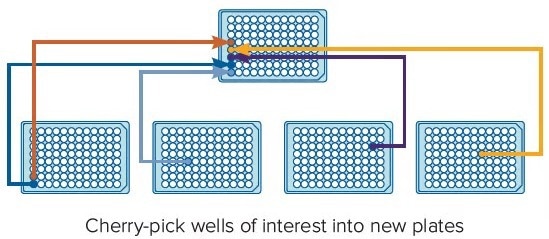
Image Credit: Molecular Devices UK Ltd
Applications
For several different branches of biology, colony picking is vital.
Outlined below are a few potential applications.
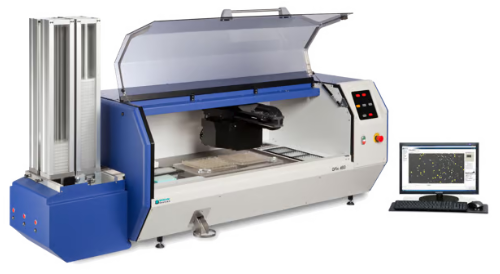
Image Credit: Molecular Devices UK Ltd
Phase Display
A method whereby a large library of antibodies is encoded into the DNA of a virus (creating a phage library) so that the antibody is displayed on the coat of the virus. The phage library infects bacterial hosts where the virus can then replicate. Individual colonies infected with the virus are then picked and deposited into a microtiter plate coated with the antigen of interest.
The plate is then washed so that only phages showing an antibody specific to the antigen can stay attached.
How QPix can help
A normal phage library comprises nearly 109-1011 variants separately expressed in E. coli, thus posing a considerable bottleneck while screening for the proper candidates. The QPix system has the potential to pick up to 3,000 clones/hour, increasing throughput, speed, and walk-away time.
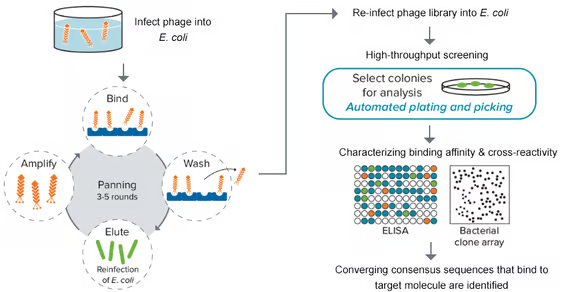
Image Credit: Molecular Devices UK Ltd
DNA Assembly
DNA assembly refers to the aligning and merging of pieces of DNA. Scientists are interested in developing genes from the ground up that frequently use computer algorithms and the identified properties of present sequences to forecast the behavior of their designer genes.
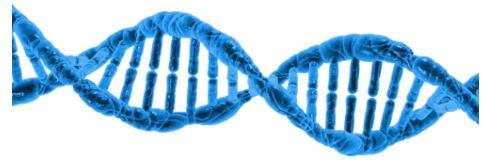
Image Credit: Molecular Devices UK Ltd
How QPix can help
The assembly of genes can be rather challenging as they are often very large (thousands of base pairs in size).
Currently, most techniques can only synthesize strands of DNA up to hundreds of base pairs. Thus, to assemble the gene of interest, thousands of shorter strands must be joined together to form the larger gene of interest.
Before gene assembly, the shorter strands of DNA are initiated into bacteria, which should be picked and prepped for gene assembly. The QPix system could help expedite this process.
Synthetic Biology
Synthetic biology is a broad term denoting the manipulation of metabolic pathways to coax microbes to manufacture proteins in a highly predictable way via engineering principles. Sometimes individual genes are altered, and sometimes full genomes are edited for preferred characteristics.
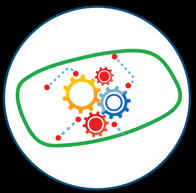
Image Credit: Molecular Devices UK Ltd
How QPix can help
The engineering of metabolic pathways to generate constant and predictable protein product frequently requires the manipulation of several pathways and various components within every pathway.
This multifactorial method requires the screening of a diverse library of mutants to determine the unique clone with the preferred characteristics. Automating this process is vital to guaranteeing consistency and also fulfilling throughput requirements.
Metagenomics
Metagenomics is an evolving field that encompasses the study of all genetic materials arising from a particular surrounding (for example, gut) instead of the conventional method of studying an identified specific organism within that surrounding.
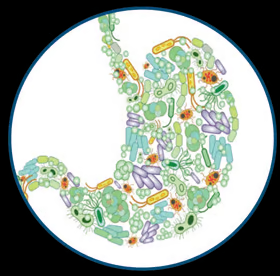
Image Credit: Molecular Devices UK Ltd
How QPix can help
A standard project starts with the sampling of microorganisms within a given environment to identify as many species as possible for additional investigation down the line.
Some experts have stated that there are more unknown microbes on Earth than there are stars in the universe. Therefore, there are generally a huge and diverse set of microbial colonies that benefit hugely from the throughput and flexibility of the Qpix system.
Selecting the Most Appropriate QPix
Source: Molecular Devices UK Ltd
| |
QPix 420 |
QPix 450/460 |
QPix HT |
QPix XE |
| |
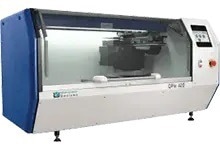
The QPix 420 is a basic design for automating colony picking with a compact footprint. It is the perfect system to substitute manual with automated picking and enables an adaptable labware use and bed setup. |
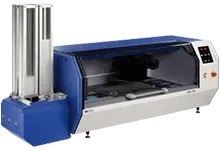
Ranging from plating to picking—throughput can be increased with up to 210 destination plates in three stacker lanes. Optional fluidics for plating and streaking enables users to plate and then pick samples. |
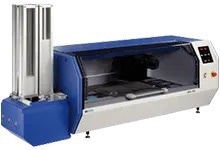
Modular, adaptable, and completely automated colony picking and library management system is all set for robotics integration for utmost throughput and walkaway time. |
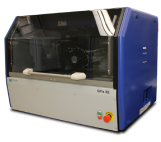
Perfect for small laboratory spaces with no compromise on efficiency, with cutting-edge imaging and robotic abilities. The modular platform enables additional integration into an automated work cell for walk-away time or throughput growth. |
| IMAGING |
White light and fluorescence.
|
White light and fluorescence.
|
White light and fluorescence.
|
White light and fluorescence
|
| PICKING CAPACITY |
3000 colonies per hour in white light, 2000 colonies per hour in fluorescent light
|
3000 colonies per hour in white light, 2000 colonies per hour in fluorescent light
|
3000 colonies per hour in white light, 2000 colonies per hour in fluorescent light
|
1500 colonies per hr white light and 1000 colonies per hour in fluorescence mode
|
| COLONY SELECTION CRITERIA |
Size, proximity, roundness, fluorescence intensity.
|
Size, proximity, roundness, fluorescence intensity.
|
Size, proximity, roundness, fluorescence intensity.
|
Size, proximity, roundness, fluorescence intensity.
|
| PICKING AND REGIONAL PICKING |

|

|

|

|
| BARCODE TRACKING |

|

|

|

|
| RE-ARRAYING AND REPLICATION |

|

|

|

|
| GRIDDING |

|

|

|
|
| PLATING AND STREAKING |
|

Only QPix 460
|

|
|
| AGAR TO AGAR |
|
|

|
|
| ROBOTICS INTEGRATION |
|
|

|
|
| |
|
|

|
|
| |
|
|

|
|
| |
|
|

|
|
| |
|
|

|
|
| |
|
|

|
|
| DESTINATION PLATE CAPACITY |
Picking: 12 plates
Replicating and re-arraying: Maximum of 20 plate positions
|
QPix 450: Up to 156 standard SBS plates, 52 standard SBS plates per stacker, up to 3 stacker lanes.
QPix 460: Up to 104 standard SBS plates, 52 standard SBS plates per stacker, up to 2 stacker lanes.
|
Configurable and expandable with automation. No limit to number of plates.
|
Picking – 4 plates
Replicating and re-arraying:
Max – 8 plates
|
| STACKERS |
|
2 or 3 Stacker Lanes
|
Plate Hotels
|
|
| SOURCE PLATE CAPACITY |
Without manual intervention:
1 x 15 cm petri dish;
5 x 9 cm petri dishes;
2 x OmniTrays;
1 x 22 cm QTrays
|
Without manual intervention:
2 x 15 cm petri dish;
10 x 9 cm petri dishes;
4 x OmniTrays;
2 x 22 cm QTrays
|
Automation mode:
1-well Omnitray,
8-well Omnitray
Manual mode:
Qtrays
Petri Dishes
Omnitrays
SBS plates
|
Manual Mode:
1 x 15 cm petri dish;
5 x 9 cm petri dishes;
2 x OmniTrays;
1 x 22 cm QTrays
Automation mode:
1-well Omnitray,
8-well Omnitray
|
| WALKAWAY TIME |
25 minutes at a time - only return to swap destination plates after 12 are full
|
QPix 450: 156 plates x 96 colonies per plate = 14,976 colonies picked in 4.5 hours
QPix 460: 104 plates x 96 colonies per plate = 9,984 colonies picked in 3 hours
|
Entire duration of run
|
|